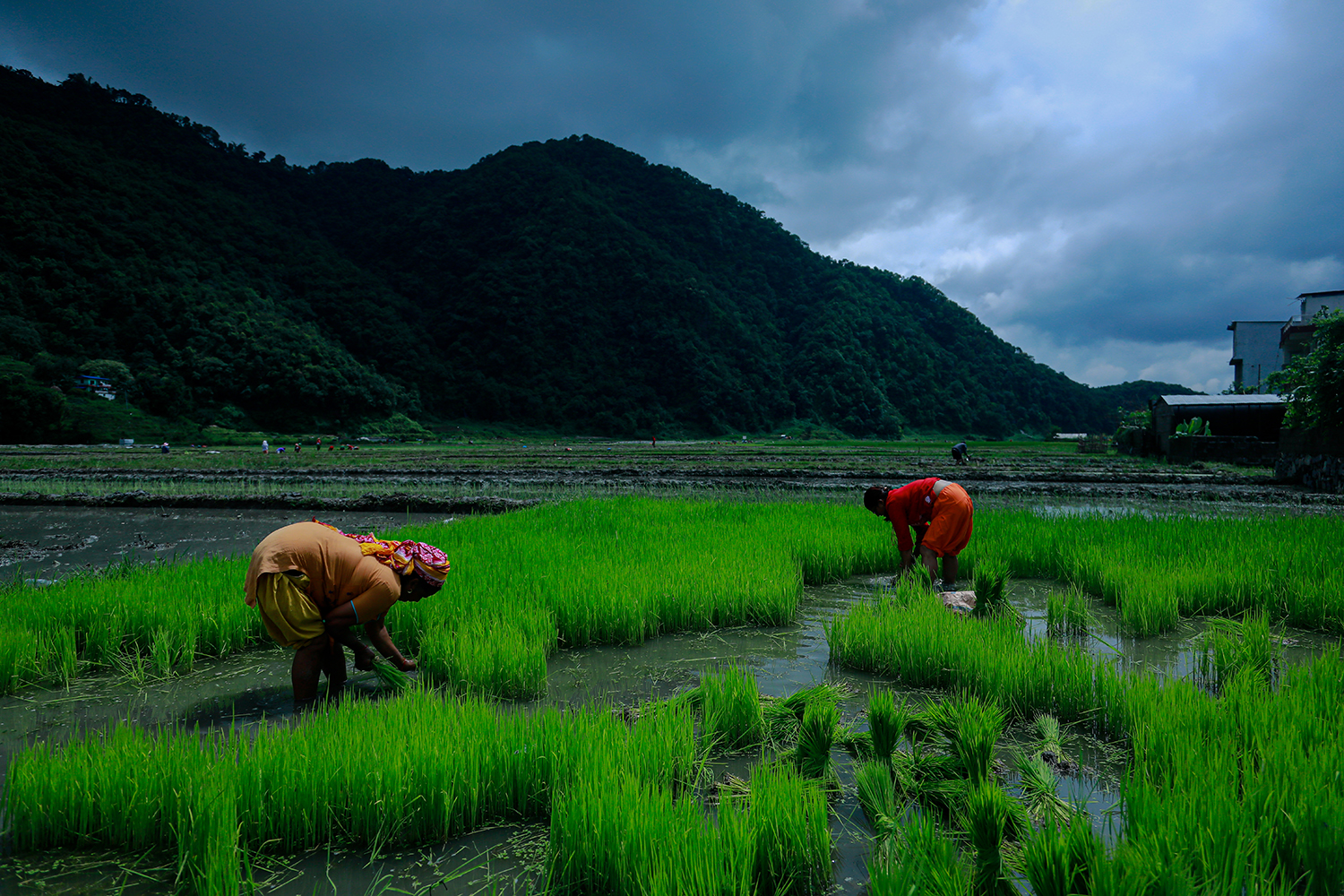Paddy planting in Pokhara

National Paddy Planting Day or Dhan Diwas is a celebration across the country. It is an even bigger deal here in Pokhara Valley which grows some of Nepal’s most famous indigenous varieties of rice including Jethobudo, Mansuli and Pokhreli.
Famers gather, singing and dancing. Mud-splashing is a celebration-must, as is the feast on dahi chiura, a traditional post ropain meal of curd and beaten rice on Asar 15.
What these pictures do not tell us, however, is how the local communities are having to cope with the increasing impacts of the climate crisis. Farmers, majority of whom are dependent on rain for agriculture, have either little too or little too much water pushing their planting schedules.
This has also meant that many local rice varieties are disappearing and others are being attacked by new pests and diseases. This has had a direct impact on further impoverishing the poor who are now migrating to the cities, across the border to India, or the Gulf or Malaysia for better economic opportunities.
Paddy is Nepal’s major crop but the productivity has not kept in pace with the increasing population. As it stands, the country grows 5.13 million metric tons of paddy a year at 3.47 tons per hectare.
Nepal was expected to record its highest annual rice harvest last year given the early start to the monsoon. But much of the standing crop was destroyed in an unseasonal post-monsoon cloudburst in October.
Back in Pokhara, photo journalist Amit Machamasi captures farmers as they transplant rice seedlings this week.












Read also: Climate change hits Himalayan rice, Erica Wu




